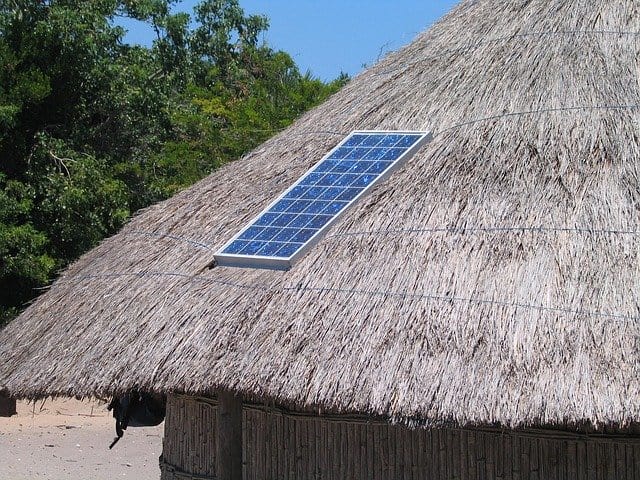The efficiency of solar panels is defined as the capacity to change over daylight into power. Given a similar measure of daylight sparkling for a similar period on two sun based boards with various effectiveness appraisals, the more proficient board will create more power than the less productive board.
Sun based board effectiveness is dictated by the creation of power by sun oriented cells, which are therefore impacted by their piece, electrical arrangement, encompassing parts, and that’s only the tip of the iceberg.
In useful terms, for two solar panels of the equivalent physical size, on the off chance that one has a 21% proficiency rating and different has a 14% effectiveness rating, the 21% proficient board will create half more kilowatt-hours (kWh) of power under indistinguishable conditions from the 14% productive board.
Along these lines, expanding vitality utilize and charge investment funds is vigorously dependent on having top-level sun oriented board productivity.
The solar industry considers solar panels productivity to be the most significant foundation while surveying a sunlight based board’s quality. While it is a significant standard, it’s by all account not the only one to consider while you assess whether to introduce a specific sun powered board.
Sun based board productivity identifies with the capacity of the board to change over vitality requiring little to no effort and high supply rate.
What is solar energy
The sun is the source of solar energy. Solar energy is acquired by tapping heat and light that has is produced by the sun. Each day dawn, the sun emits a huge quantity of energy.
The solar releases more energy in one second than humans have ever used since the beginning of time. Sun is like other stars just but it is a bigger ball compared to the rest. This gas ball is usually made up of hydrogen and helium gases.
Through the process of nuclear fusion, the sun releases energy from its center. Throughout the nuclear fusion process, the sun’s exceeding high pressure causes separation of the hydrogen atoms leaving their central cores to integrate.
One helium atom is formed by a combination of four hydrogen nuclei, but one helium atom weighs less compared to the four hydrogen atoms that fused to form it because some matter gets lost during the nuclear fusion process.
At this point, the lost substance is from the disintegrated hydrogen atoms is released into space as radiant energy. Therefore, solar energy can be defined as the conversion of light energy that is radiated from the sun to electricity.
With all the energy radiated from the sun, only a small portion of it strikes the earth. However, daily the quantity of energy reaching the earth is vast.it is usually more than enough to supply the earth with energy for more than one and a half years.
Can solar panels work on artificial light, if yes, then how?
Yes. It is evident and scientifically proven that solar panels can work in the presence of artificial light. Nonetheless, the amount of light of electricity is much lower compared to the amount of power produced by the solar panels when they are working under natural light from the sun.
The amount of energy also produced by solar panels working under artificial light depends also on the source of the artificial light, for instance, the type of the bulb and the type of light produced from it, whether warm or hot light.
For the maximum working of a solar panel, it is supposed to work under the light that comes from the sun. We can depict it as the transference of vitality from the Sun through a lot of electromagnetic radiations that are conveyed in a light range that goes from bright to infrared radiation.
Artificial light is produced when a piece of Fibre is warmed inside a piece of a transparent glass under a particular condition of making and produced at particular speeds with the best been a region called the infrared region of artificial light.
Having in mind that solar panels absorb light from a source at a particular speed similar to the speed that artificial light is produced, it is then considered that solar panels can work under the use of artificial light.
There are various types of artificial lights which are around twelve in number which is produced under various conditions with the use of various gases for the production which include the use of a mercury gas for the production of artificial light.
The reaction of various metals with various gases like the halogen is another source of a particular form of artificial light which if meets the speed of the light produced from the sun can be put into use by solar panels to produce solar energy.
Nevertheless, there are other various sources and forms of artificial light which when the lights produced get to the speed of the sunlight can be utilized by the solar panels to produce solar energy.
To answer the question of whether solar panels can work under artificial light, Ben Minnaert and Peter Veelaert from the Ghent University classified lights into various categories or classes which were: glowing, fluorescent, LED, and metal halide lights.
At that point, they used various types of solar panels. The various types of solar panels used included monocrystalline, polycrystalline, Cadmium Tellurium, CIGS, and other types of solar panels to evaluate the amount of solar energy harvested from these various forms of artificial light by the various types of solar panels which were conducted indoors.
Nevertheless, the efficiency of the amount of solar energy produced from artificial light is lower than the amount of solar energy produced under natural light.
The amount of solar energy produced from a solar cell increases significantly when a solar cell exposed to sunlight but significantly decreases when the same solar panel is exposed to artificial light.
Due to the above reason, it is therefore recommended that in the installation process of a solar panel, the site of the location of the solar panel should be at the maximum exposure to the maximum sunlight possible to increase the efficiency of the panel even under the minimum sunlight possible.
After the conducting of the experiment using the various types of artificial lights for the different types of solar panels, the types of the solar panel known as monocrystalline was found to the best solar panel to work artificial light.
The second type of solar panel to work best after the monocrystalline panel is the poly-crystalline type of solar panel. Different types of artificial lights work differently with different types of solar panels. However, LED light, fluorescent light, and metal halide light don’t work best with solar panels so their efficiency of energy production is relatively unreliable.
According to the study conducted above in testing various types of solar panels under various types of artificial lights, it was discovered that solar panels react and work under specific or particular lights of a particular characteristic.
These lights are located along with the red to the violet region of the electromagnetic light. When it is dull, the sun based cell quits directing as there is no daylight.
As the measure of light expands bit by bit with the light of the sun, the amount of solar energy collected by the solar panels begins to increase in a similar manner.
There comes sometimes and a moment that the solar panels do not produce any additional energy despite the increased production of sunlight from the sun.
It is therefore defined that solar panels work best with the daylight and that is the reason we see solar panels outside the houses, at the highest point of the rooftops slanted at a specific edge for the maximum absorption of sunlight for increased production of solar energy.
Also, solar panels produce solar energy with the use of artificial light produced by brightly lighting bulbs. This is because the wavelength characteristics of these light lie in the favorable range of characteristics for a light to fall on a solar panel and produce soar energy.
Since the wavelength of the artificial lights is not that strong, we cannot place many solar panels to operate under it Even though we can power and run little gadgets like sun powered mini-computers, watches and smaller than expected toys like a little sun-powered vehicle.
Splendor or radiance is the measure of light that sparkles on sun oriented cells. In all-out murkiness, a cell creates no power. As the measure of light increments, so does the cell’s current. At a specific degree of brilliance, be that as it may, the cell’s yield arrives at the farthest point; past this point, all the more light gives no extra current.
A sun based cell’s details incorporate an ostensible voltage and current rating which is the cell’s yield under direct splendid daylight.
To get the most yield from a sunlight based cell, it’s essential to confront it towards the sun as straightforwardly as could be expected under the circumstances. A sun-powered board installer, for instance, will mount aboard at a point that gets a large portion of the sun’s beams.
The point relies upon where you’re situated on the earth: the more remote north or south you are from the equator, the more extreme the edge. Some sun based control “ranches” have boards on an instrument that tilts, following the sun’s day by day development in the sky.
For the maximum functioning of solar panels, they have to work best with regular daylight, since most of the uses for sun-powered controlled gadgets are outside or in space.
Because of the wavelength of the artificial light, for example, glowing and bright light bulbs are in the same characteristics of the light from the sun, therefore, solar panels can also work inside, controlling little gadgets, for example, light electric bulbs and watches.
Other sources of artificial light, for example, lasers and neon lights have very limited shading spectra; therefore, solar cells may not function best and with efficiency with their light.
A solar panel is comprised of various layers as its components which are majorly two and include; one layer, called N-type, contains hints of components, for example, arsenic to give the material a negative electric charge; the subsequent layer, called P-type, is bound with different components that give a positive charge.
Electrically, the different sides act like the terminals of a battery; when associated with a circuit, an electric flow streams from the positive side, through the circuit parts and to the sun oriented cell’s negative side.
Some sun oriented cells use silicon in gem structure; others utilize a nebulous, or glass-like, silicon. Crystalline silicon will, in general, be progressively effective at changing over light however costs more than the shapeless sort.
Conclusion
There has been the existence of various theories and beliefs on the various conditions for the perfect working of a solar panel. These speculations have paid very little concern on whether solar panels can work through a glass panel or can work through the existence of lights which are not natural lights.
When a solar panel is well situated or located in a position that it can absorb artificial light, it can work but the working efficiency of the solar panel under such conditions is less efficient compared to a condition of when the solar panel is situated to absorb adequate natural light.
Taking a situation of comparison between a solar panel working in the exposition of natural light and the to expose of artificial light, the solar panel working in natural lights is likely to be more efficient compared to the one working in artificial light due to the frequency of the light radiation coming from the source of the light.





I was not aware of this topic that solar panels could work on artificial light, I was thinking that it isn’t at all possible but after reading your blog post I have gotten a great idea of that, the solar panel work on the artificial light, so thanks for making me aware about this content in the blog post and the blog post was really informative to read.
Very Useful Article, the information you provide on how solar panels can work on artificial light is incredible Keep sharing such information & thanks for this knowledgeable post.